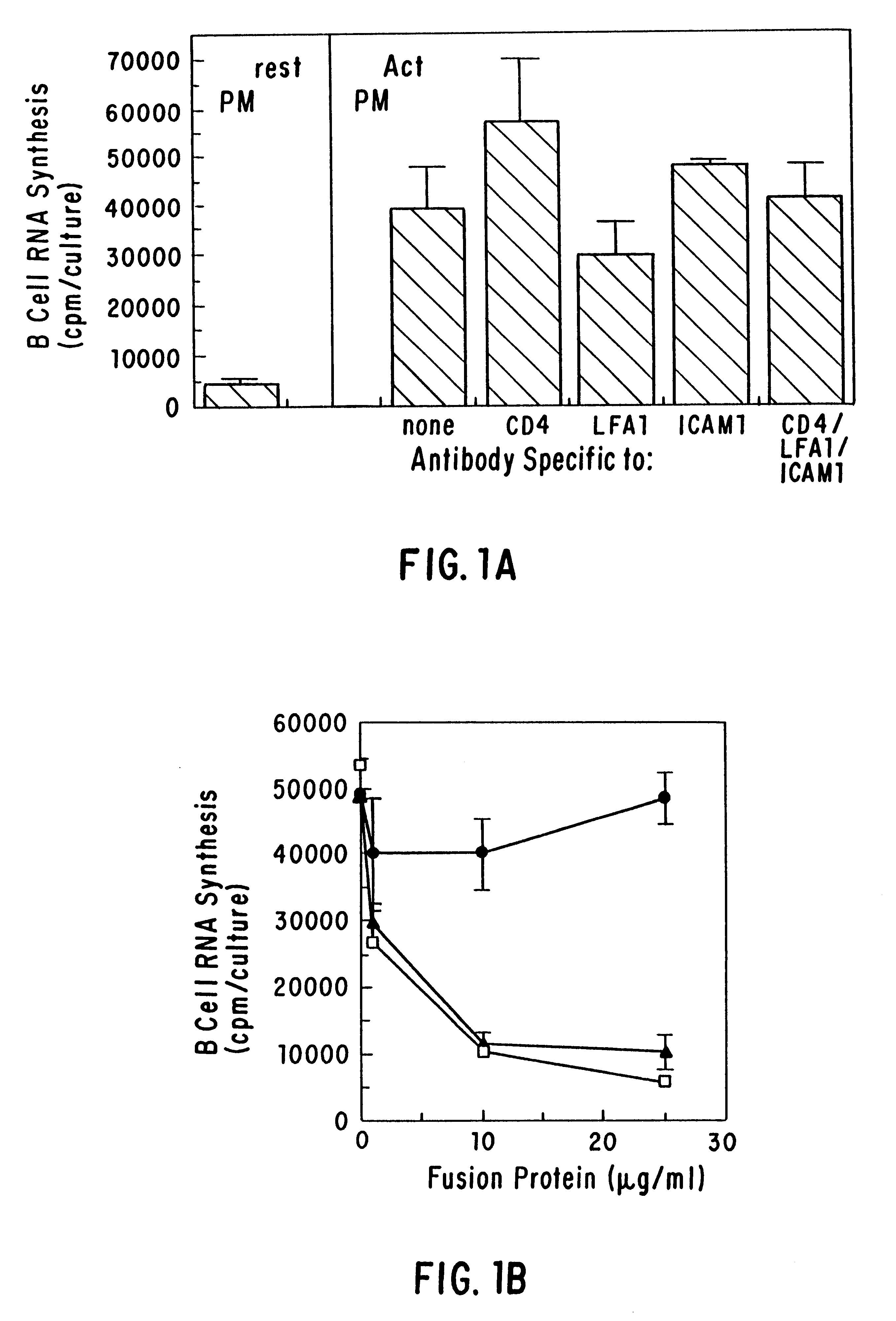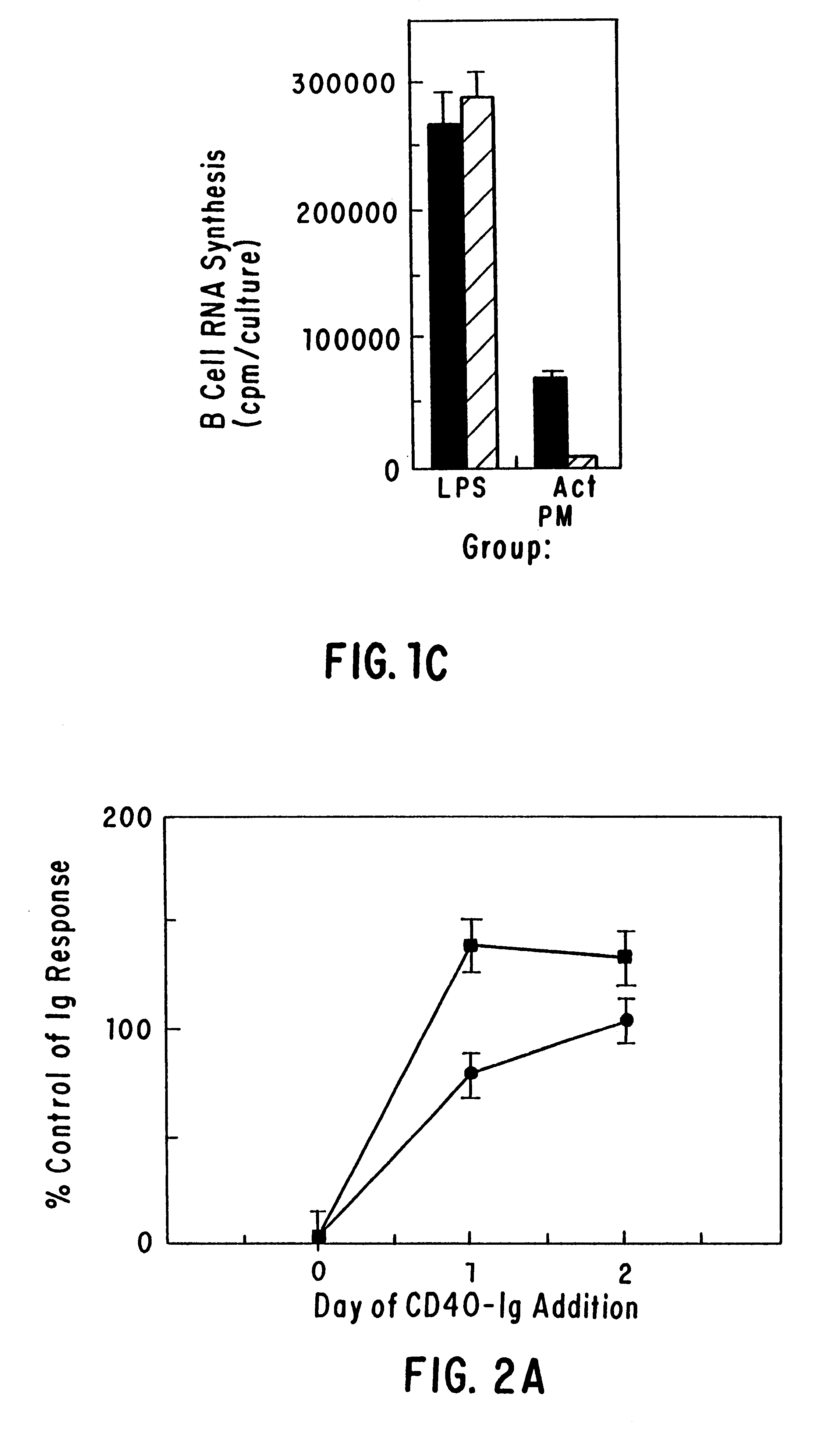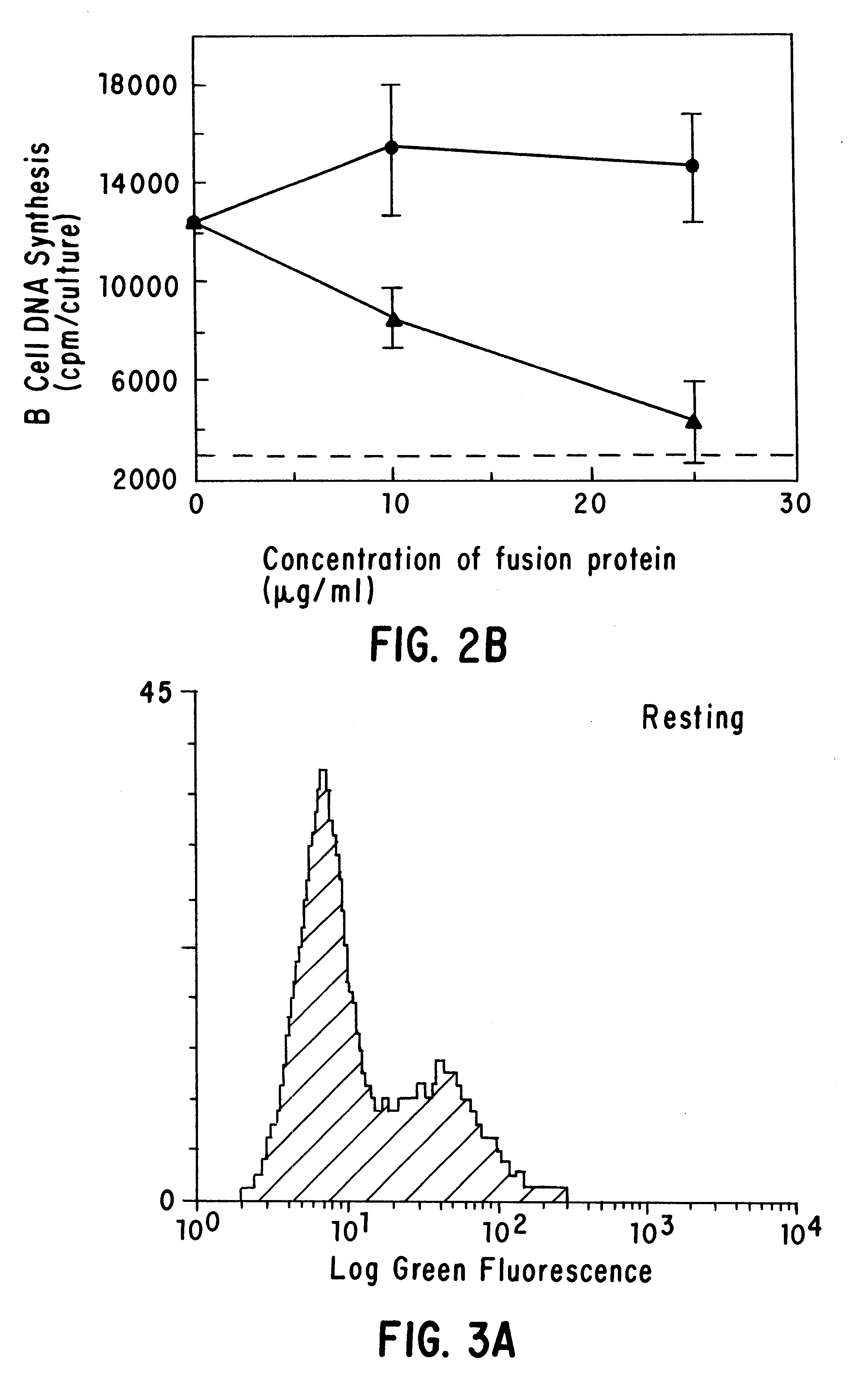CD40 receptor ligands
a technology of receptors and ligands, applied in the field of counter-, can solve the problem of virtually impossible exhaustion of the patient's response to each and every potential allergen
- Summary
- Abstract
- Description
- Claims
- Application Information
AI Technical Summary
Benefits of technology
Problems solved by technology
Method used
Image
Examples
Embodiment Construction
The present invention provides for a substantially purified CD40CR receptor; for soluble ligands of CD40CR, including antibodies as well as fusion molecules comprising CD40; and for methods of controlling B-cell activation.
For purposes of clarity of disclosure, and not by way of limitation, the detailed description of the invention is divided into the following subsections:
(i) ligands that bind to CD40CR; (ii) methods used to characterize CD40CR; (iii) preparation of purified CD40CR; (iv) uses of ligands that bind to CD40CR; and (v) uses of CD40CR.
5.1. Ligands that Bind To CD40CR
The present invention provides for soluble ligands of CD40CR, including (i) fusion molecules comprising at least a portion of CD40 protein and (ii) antibodies or antibody fragments.
The term "soluble," as used herein, indicates that the ligands of the invention are not permanently associated with a cell plasma membrane. Soluble ligands of the invention may, however, be affixed to a non-cellular solid support,...
PUM
| Property | Measurement | Unit |
|---|---|---|
| concentrations | aaaaa | aaaaa |
| concentrations | aaaaa | aaaaa |
| concentration | aaaaa | aaaaa |
Abstract
Description
Claims
Application Information
 Login to View More
Login to View More - R&D
- Intellectual Property
- Life Sciences
- Materials
- Tech Scout
- Unparalleled Data Quality
- Higher Quality Content
- 60% Fewer Hallucinations
Browse by: Latest US Patents, China's latest patents, Technical Efficacy Thesaurus, Application Domain, Technology Topic, Popular Technical Reports.
© 2025 PatSnap. All rights reserved.Legal|Privacy policy|Modern Slavery Act Transparency Statement|Sitemap|About US| Contact US: help@patsnap.com



